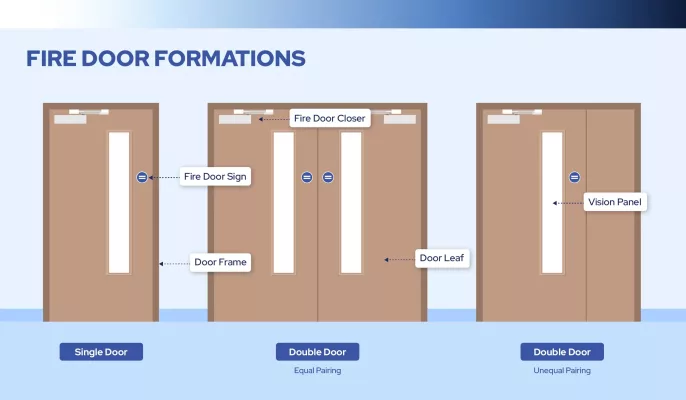Innovative Steel Energy-Saving Fireproof Window and Manufacturing Process Abstract:This invention pertains to the technical field of fireproof doors and windows, specifically introducing a unique design and manufacturing process for a steel energy-saving fireproof window. The fireproof window consists of an outer frame and an inner sash. The inner sash is equipped with double-layer glass, enhancing […]
Tag Archives: Steel Energy-Saving Fireproof Window
Steel Energy-Saving Fireproof Windows: Technical Guide
Steel energy-saving fireproof windows combine fire resistance, thermal insulation, and security in a single system. They are used in commercial, industrial, and high-rise residential buildings where fire safety and energy efficiency are critical.
1. Key Features
✔ Fire Resistance – Rated for 30–120+ minutes (tested to UL 9, BS 476, EN 1364-1).
✔ Thermal Insulation – Low U-factor (≤1.2 W/m²K) to reduce heat loss.
✔ Soundproofing – STC ratings up to 45 dB for noise reduction.
✔ Security – Reinforced steel frames resist forced entry.
✔ Aesthetics – Powder-coated finishes, slim profiles, and glazing options.
2. Construction & Materials
A. Frame
Galvanized Steel (1.2–2.0 mm thickness) for structural integrity.
Thermal Break Technology – Polyamide or polyurethane barriers to prevent heat transfer.
Fire-Resistant Sealants – Intumescent strips expand at high temperatures to seal gaps.
B. Glazing
Fire-Rated Glass (Ceramic, wired, or gel-filled) for 30–120 min resistance.
Double/Triple Glazing – Low-E coatings and argon gas for insulation.
Laminated Glass – Impact-resistant and soundproof.
C. Hardware
Fire-Rated Hinges & Locks – Stainless steel, heat-resistant up to 1000°C.
Automatic Closers – Ensure windows shut during a fire.
3. Manufacturing Process
Step 1: Steel Frame Fabrication
Steel coils are cut, bent, and welded into window frames.
Thermal breaks are inserted to reduce conductivity.
Step 2: Fireproof Glass Assembly
Fire-rated glass is laminated or tempered for safety.
Spacer bars (stainless steel or thermally broken) hold glazing layers.
Step 3: Weatherproofing & Insulation
Silicone gaskets for airtight sealing.
Intumescent strips applied around the frame edges.
Step 4: Powder Coating & Finishing
Pre-treatment (phosphating for rust resistance).
Electrostatic powder coating (durable, customizable colors).
Step 5: Quality Testing
Fire resistance test (furnace exposure per UL/EN standards).
Thermal performance test (U-value measurement).
Air/water infiltration test (ASTM E283/E331).
4. Applications
✅ High-Rise Buildings – Balcony windows, curtain walls.
✅ Hospitals & Schools – Fire escape routes.
✅ Industrial Facilities – Control rooms, warehouses.
✅ Hotels & Apartments – Energy-efficient, fire-safe fenestration.
5. Comparison with Alternatives
| Feature | Steel Fireproof Window | Aluminum Fireproof Window | Wood-Clad Fireproof Window |
|---|---|---|---|
| Fire Rating | 30–120 mins | 30–90 mins | 30–60 mins |
| Thermal Efficiency | Good (with thermal break) | Moderate | Best (natural insulator) |
| Durability | ⭐⭐⭐⭐⭐ (rust-proof) | ⭐⭐⭐⭐ (lightweight) | ⭐⭐ (prone to warping) |
| Cost | $$ | $$$ | $$$$ |
| Maintenance | Low | Low | High (varnishing needed) |
6. Top Manufacturers
Assa Abloy (Pyropanel Vision)
Promat (Luxfire Steel Windows)
Hope’s Windows (Custom Fire-Rated Steel)
Schüco (Energy-Efficient Fire Windows)
7. Installation & Compliance
Must meet IBC, NFPA 80, EN 1364-1 standards.
Requires fire-rated framing (steel or reinforced concrete).
Smoke seals mandatory for compartmentalization.
Conclusion
Steel energy-saving fireproof windows provide superior fire protection, thermal efficiency, and security, making them ideal for modern buildings. Advances in thermal break technology and fire-rated glazing continue to improve performance.


